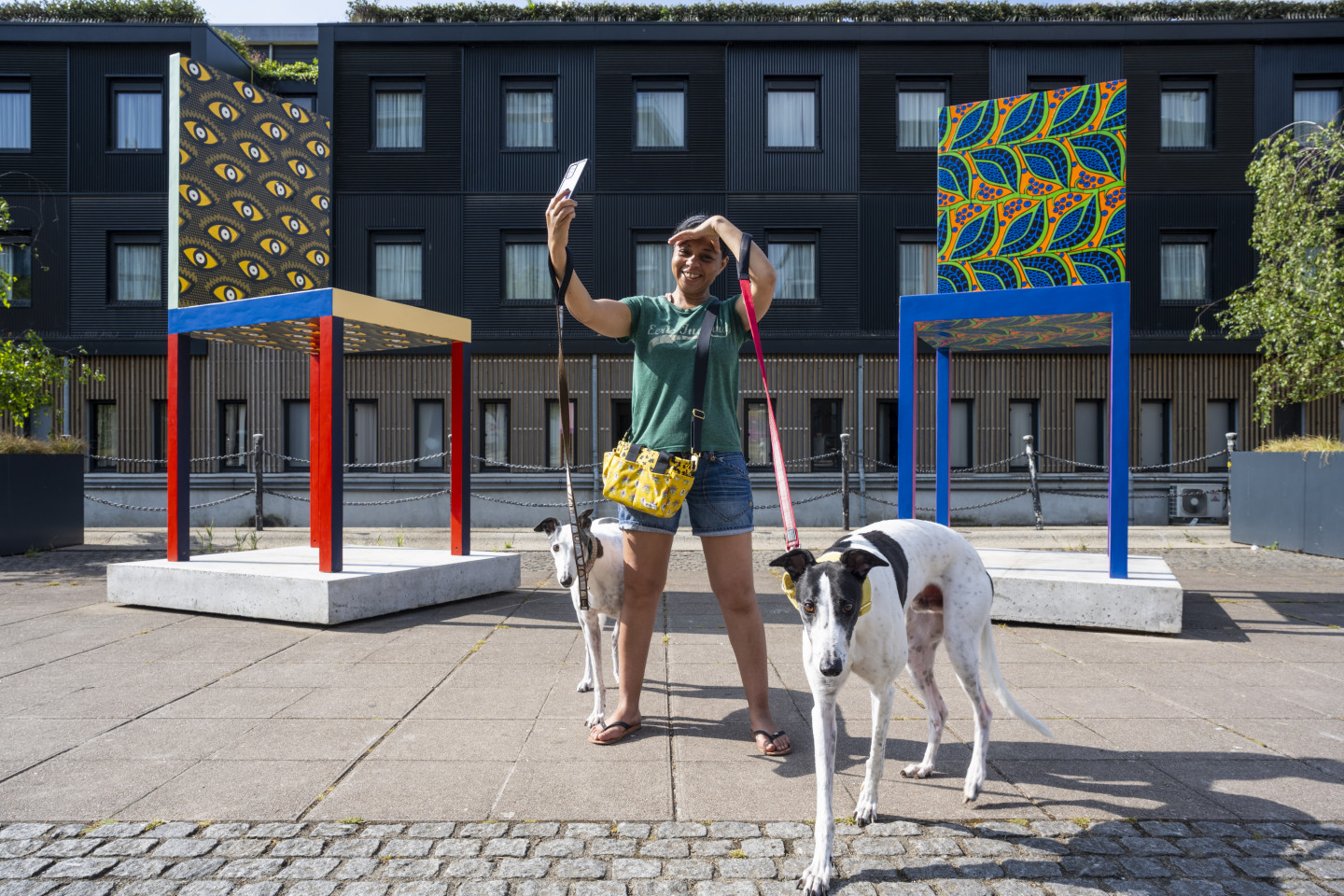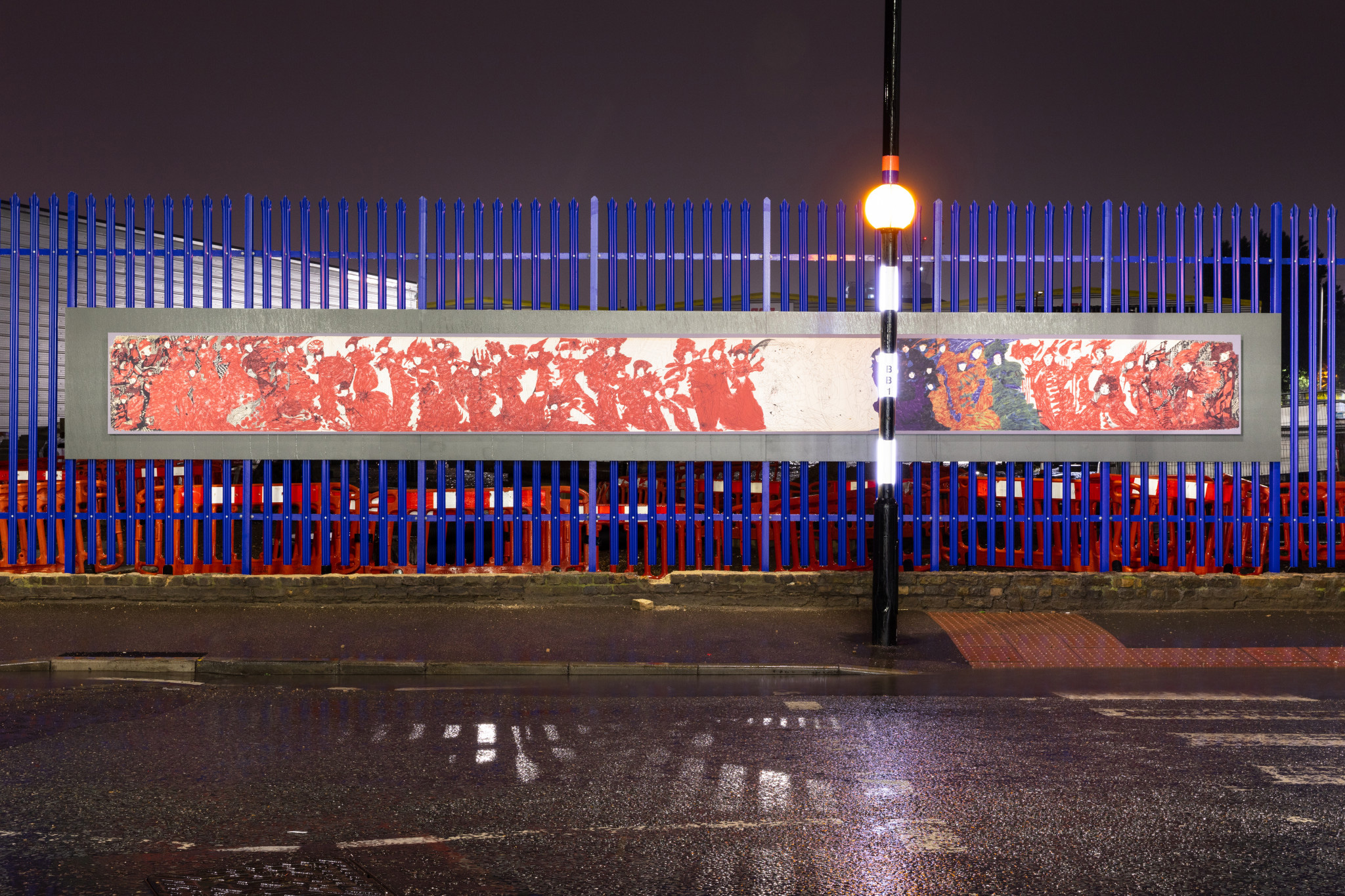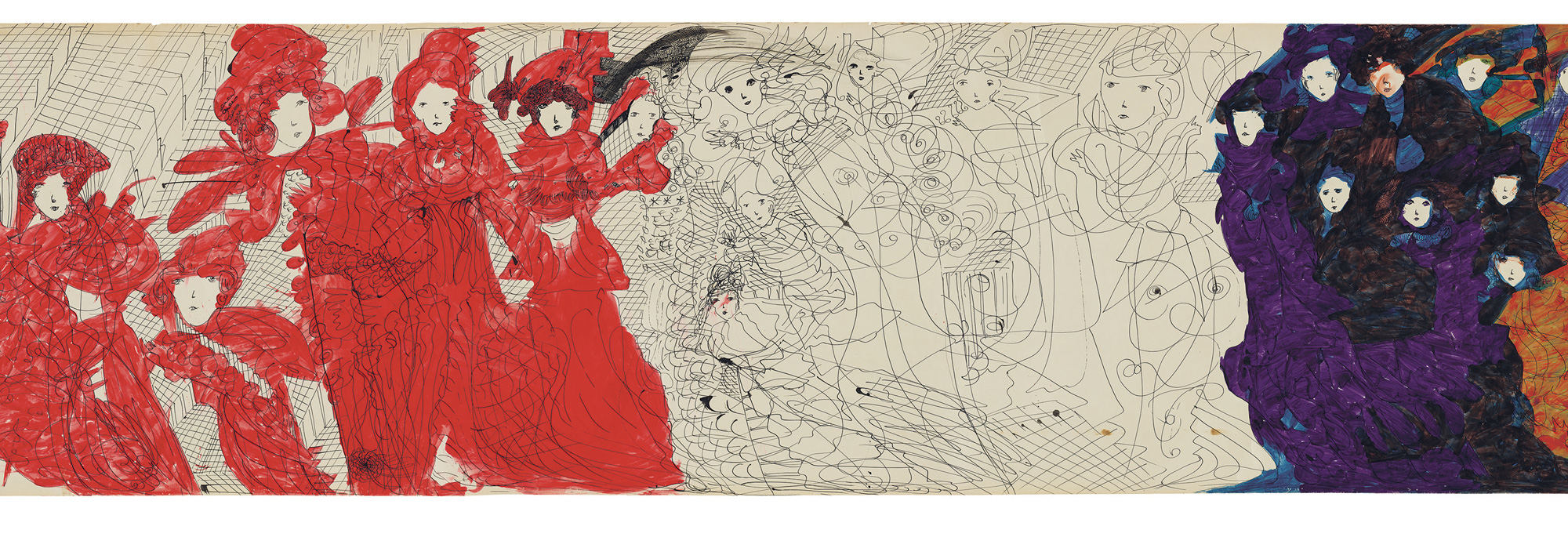Madge Gill
Nature in Mind
Madge Gill: Nature in Mind, curated by The Line with Sophie Dutton, is an exhibition across five sites in Newham that celebrates the inspiration the artist found from natural surroundings.
Madge Gill (1882-1961), who lived and worked in Newham 1920-1961, was a self-taught artist. She created meticulous small-scale and monumental works, skilfully exploring different techniques and formats including paints, inks and textiles. Gill’s life story is one of triumph over adversity. The hardships she endured saw her turn to spiritualism and making, both providing relief from her mental turmoil. Her drawings often feature repetitive patterns of flowers, swirling shapes, architectural forms and checkerboards. A female figure often appears in her work, though Gill never offered an explanation of who she was.
Gill created her work on whatever she could find, from postcards to large-scale calico up to 100ft long. Red Women was created in a single evening, on the reverse of the original drawing she wrote ‘May 19 – 49. Evening 8pm’. Working along a roll of paper, the artist would have been unable to see the full drawing whilst making it. Due to its scale, this 9-metre long work has never been displayed in its entirety until now and it is the only installation in this exhibition that has been reproduced at its original size.
Nature in Mind takes the form of large-scale outdoor installations of Gill’s work, that reflect the artist’s own process of bringing her largest works outside, into the garden, to see them in their entirety. She would often reference floral elements in her work and once stated: ‘If I were a man, I would have gone abroad and studied botany’.
Other Madge Gill installations can be discovered at:
• Network Rail underpass, Queen Elizabeth Olympic Park
• House Mill, Three Mills Lane
• UKPN bridge, Cody Dock
• Royal Victoria Dock, by IFS Cloud Cable Car terminal
In partnership with Newham Council. Image courtesy Newham Council’s Heritage Service..
Installation funded by Heritage Lottery Fund.
Supported by



Biography
Madge Gill was born an illegitimate child in 1882 in Walthamstow, London. She created thousands of meticulous ink drawings during her lifetime. Her inspired works were often monumental, either in sheer scale or in number. For an untutored artist, she skilfully explored different techniques and formats: paints, inks, textiles. A disjointed childhood saw her move from Walthamstow, to Barkingside and later on to Canada when she was 14, after her family decided they weren’t able to support her and placed her in an orphanage. Barnardo’s were then involved in the British Home Child scheme and shipped Gill to Canada for work and a promise of a more wholesome future. Separated from her family, Madge remained in Canada until she was 19 years old. It was very rare for children to return home but, determined, she saved up and moved back to London, becoming a nurse at Whipps Cross Hospital in Leytonstone soon after.
A few years later she happily married her cousin, Tom Gill, and the couple went on to have three sons. However, the couple suffered a number of tragedies. Their second son Reggie sadly died during the 1918 influenza pandemic and a year later, Gill gave birth to a stillborn girl. After this fourth pregnancy, Gill’s physical and mental health deteriorated.
It was at this time that Gill began to create works of art, which often resulted in a flurry of seemingly unending drawing activity which, Gill explained, was encouraged by a spirit guide she came to embody called Myrninerest. Now living in Newham, Gill instinctively made inspirational, intuitive and beautiful work; drawing in ink and pencil on what she could find and construct, from postcards to giant 25ft calico drawings. She also produced various intricate embroideries as well as pieces of hand-woven clothing. Her artwork would often feature a young woman dressed in flowing robes, but never gave any indication of who this figure was — perhaps it was ‘Myrninerest’ or even herself?
Images:
1. Jeff Moore
2: Angus Mill
3. Red Women, 1949, pencil and ink on paper, 75 x 900 cm [detail]. Courtesy Newham Council’s Heritage Service.



